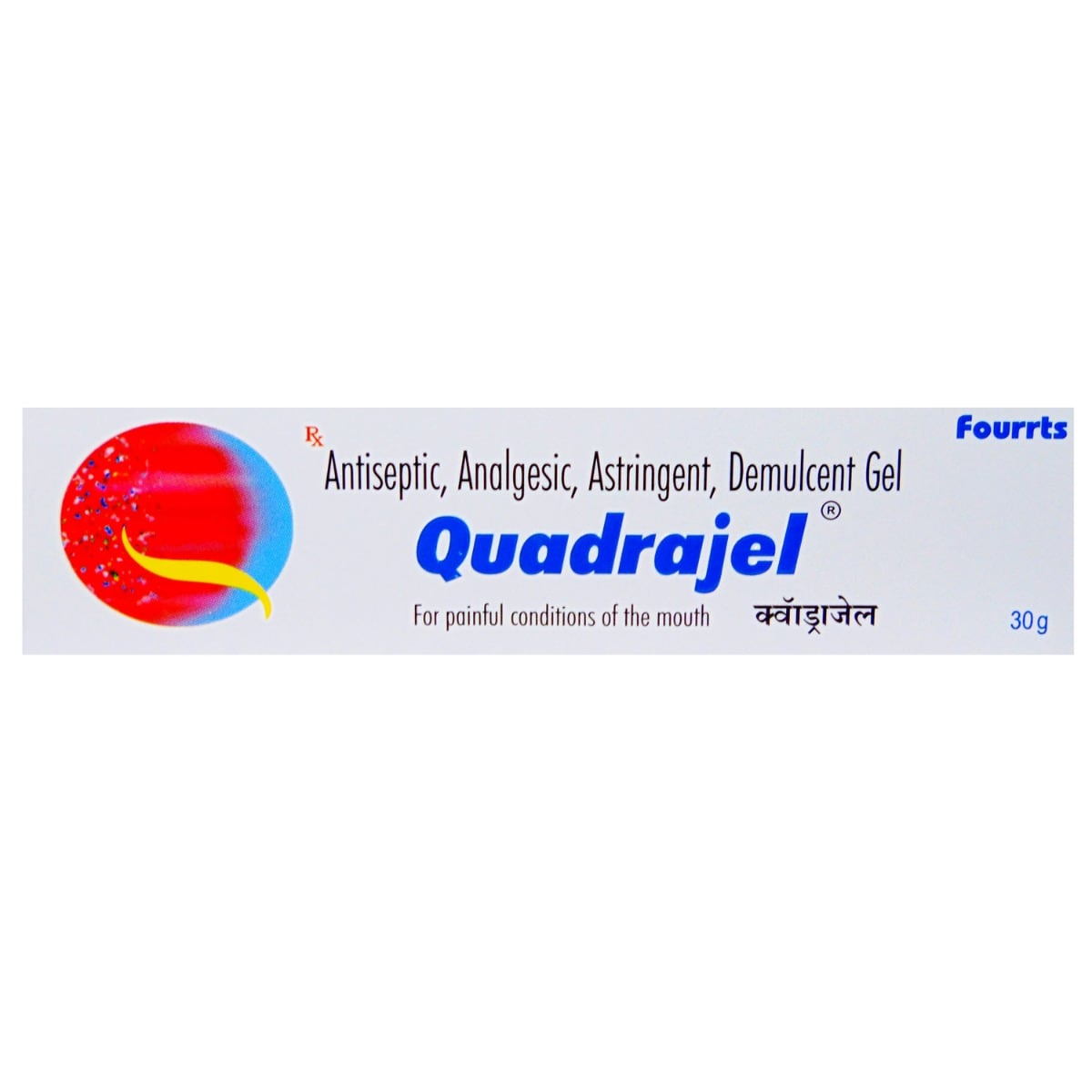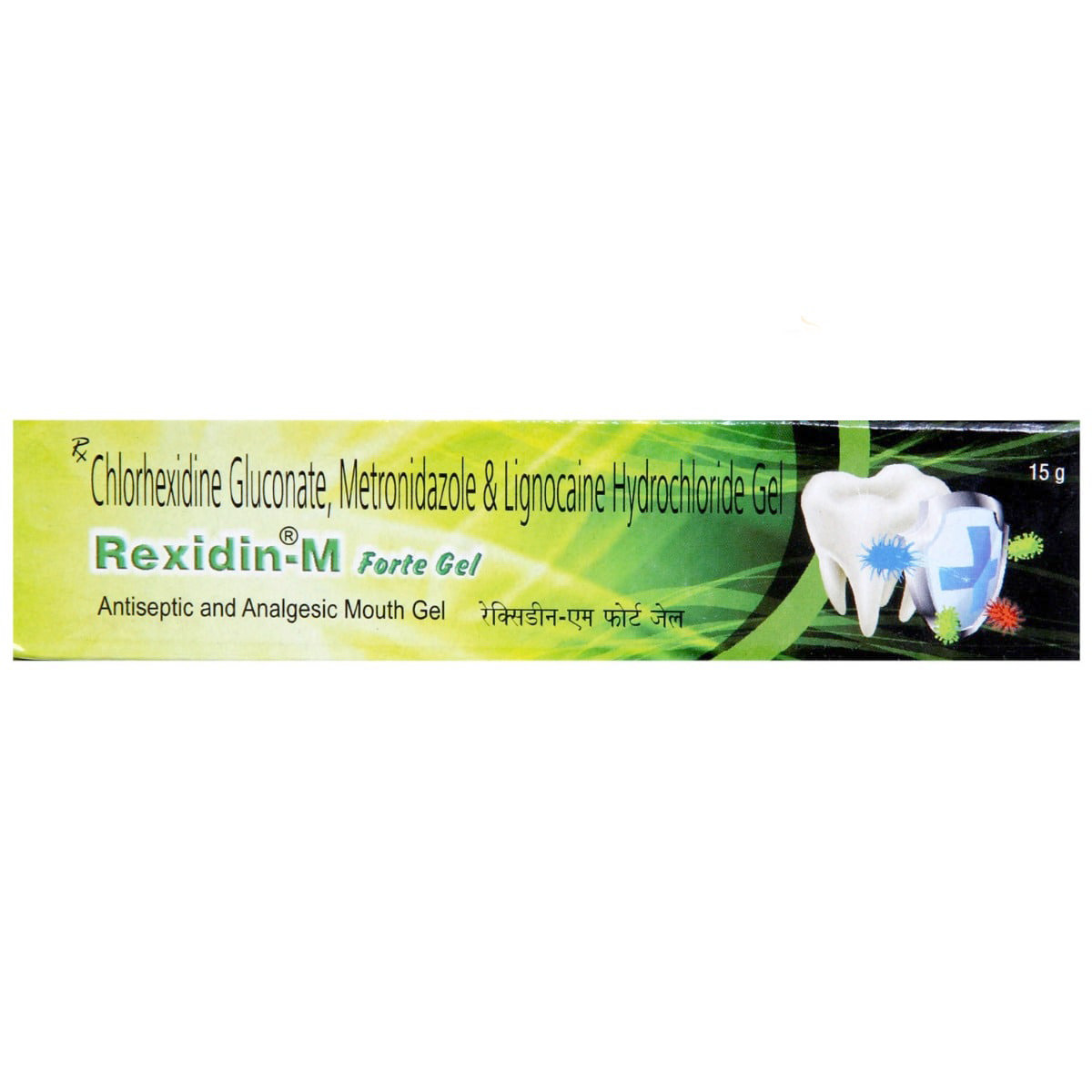Flagyl Gel 20 gm


MRP ₹86.5
(Inclusive of all Taxes)
₹13.0 Cashback (15%)
Provide Delivery Location
Online payment accepted
 Prescription drug
Prescription drugWhats That
Synonym :
Manufacturer/Marketer :
Consume Type :
Return Policy :
Expires on or after :
About Flagyl Gel
Flagyl Gel is used in treating gum and mouth ulcers. Mouth ulcers are painful and small lesions in the mouth or base of gums. It can make eating, drinking, and talking difficult and uncomfortable.
Flagyl Gel is a combination medication containing Metronidazole (an antibiotic), Lidocaine (local anaesthetic), and Chlorhexidine (an antiseptic). Flagyl Gel is primarily used in treating mouth ulcers. Lidocaine helps treat mouth ulcers by forming a protective layer on the ulcer and blocking the transmission of pain signals to the brain and decreasing the sensation of pain. Chlorhexidine is an antiseptic and disinfectant which effectively cleans out the ulcer surface to prevent infection and metronidazole; being bactericidal in nature kills the bacteria by damaging its DNA and preventing these bacteria's growth spread hence relieving the symptoms. As a result, good oral hygiene is maintained.
Your doctor will decide the dose depending on the type of infection that is being treated. The most common side effect of Flagyl Gel is a metallic taste, bitter taste, burning, transient redness, irritation, dryness, and staining of teeth. If these side effects are persistent and bothersome, please see your doctor.
Please inform your doctor before using Flagyl Gel if you are pregnant or breastfeeding. Avoid intake of alcohol while having treatment with Flagyl Gel as it may affect the working of Flagyl Gel. Maintain good oral hygiene and brush at least 2 times a day to avoid any oral infection and its spread. Do not rinse the mouth or drink or eat anything for 30 minutes after applying Flagyl Gel.
Uses of Flagyl Gel
Directions for Use
Medicinal Benefits
Flagyl Gel is a combination medication containing Metronidazole (an antibiotic), Lidocaine (local anaesthetic), and Chlorhexidine (an antiseptic). Flagyl Gel is primarily used in treating mouth ulcers. Lidocaine helps treat mouth ulcers by forming a protective layer on the ulcer, blocking the transmission of pain signals to the brain, and decreasing the pain sensation. Chlorhexidine is an antiseptic and disinfectant which effectively cleans out the ulcer surface to prevent infection. Metronidazole is bactericidal in nature kills the bacteria by damaging its DNA and preventing these bacteria's growth spread hence relieving the symptoms. As a result, good oral hygiene is maintained, and it is easier to go out and perform daily activities.
Storage
Drug Warnings
Please inform your doctor before using Flagyl Gel if you are pregnant or breastfeeding. Avoid intake of alcohol while having treatment with Flagyl Gel as it may affect the working of Flagyl Gel. Maintain good oral hygiene and brush at least 2 times a day to avoid any oral infection and its spread. Do not rinse the mouth or drink or eat anything for 30 minutes after applying Flagyl Gel. Flagyl Gel may cause staining; it can be reduced by reducing the consumption of tea, coffee, and red wine and brushing with toothpaste daily before using the gel.
Drug-Drug Interactions
Drug-Drug Interactions
Login/Sign Up
Taking Flagyl Gel 20 gm and Arbutamine together can affect the rhythm of your heart.
How to manage the interaction:
Taking Flagyl Gel 20 gm with arbutamine is not recommended, but can be taken together if prescribed by a doctor. However, consult your doctor if you experience irregular heartbeat, chest tightness, blurred vision and nausea. Do not discontinue any medication without consulting a doctor.
Taking Flagyl Gel 20 gm with Saquinavir can increase the blood levels of Flagyl Gel 20 gm and cause an irregular heart rhythm.
How to manage the interaction:
Taking Flagyl Gel 20 gm with Saquinavir is not recommended, but it can be taken together if prescribed by a doctor. However, consult your doctor if you experience sudden dizziness, lightheadedness, fainting and rapid heartbeat. Do not discontinue any medications without consulting a doctor.
Co-administration of Amprenavir with Flagyl Gel 20 gm can increase the risk or severity of side effects.
How to manage the interaction:
Taking Flagyl Gel 20 gm with Amprenavir is generally avoided as it can result in an interaction, it can be taken if your doctor has advised it. However, if you experience throbbing in the head and neck, throbbing headache, difficulty breathing, nausea, vomiting, sweating, thirst, chest pain, rapid heartbeat, palpitation, low blood pressure, dizziness, lightheadedness, blurred vision, and confusion, contact a doctor immediately. Do not discontinue any medications without consulting a doctor.
Drinking alcohol while taking Flagyl Gel 20 gm can increase the risk or severity of side effects.
How to manage the interaction:
Taking Flagyl Gel 20 gm with Ethanol is avoided as it can result in an interaction, it can be taken if your doctor has advised it. However, if you experience flushing, throbbing in head and neck, throbbing headache, difficulty breathing, nausea, vomiting, sweating, thirst, chest pain, rapid heartbeat, palpitation, low blood pressure, dizziness, lightheadedness, blurred vision, and confusion, contact a doctor immediately. Do not discontinue any medications without consulting a doctor.
Coadministration of Disulfiram with Flagyl Gel 20 gm can increase the risk of side effects.
How to manage the interaction:
Taking Flagyl Gel 20 gm and Disulfiram together is generally avoided as it can lead to an interaction, it can be taken if advised by your doctor. However, if you experience sudden dizziness, confusion, weakness, shortness of breath, or palpitations, contact your doctor. Do not discontinue any medications without consulting a doctor.
Taking Flutamide with Flagyl Gel 20 gm can increase the risk of methemoglobinemia (blood disorder in which too little oxygen is delivered to your cells).
How to manage the interaction:
Although taking Flagyl Gel 20 gm and Flutamide together can evidently cause an interaction, it can be taken if your doctor has suggested it. However, consult the doctor immediately if you develop gray discoloration of the skin, abnormal blood coloration, nausea, headache, dizziness, lightheadedness, weakness, shortness of breath, rapid or shallow breathing, a rapid heartbeat, palpitation, anxiety, or confusion. Do not stop using any medications without consulting doctor.
Taking Conivaptan with Flagyl Gel 20 gm may increase the blood levels of Flagyl Gel 20 gm which increase the risk of serious side effects such as irregular heart rhythm and other cardiovascular problems.
How to manage the interaction:
Although taking Flagyl Gel 20 gm and Conivaptan together can evidently cause an interaction, it can be taken if your doctor has suggested it. However, if you experience any unusual symptoms contact your doctor immediately. Do not stop using any medications without first talking to your doctor.
Taking Flagyl Gel 20 gm with Cyclophosphamide may increase the risk of methemoglobinemia (a rare condition that can lead to oxygen deprivation in tissues and vital organs due to reduced oxygen-carrying capacity of the blood).
How to manage the interaction:
Although there is a possible interaction, cyclophosphamide can be taken with Flagyl Gel 20 gm if prescribed by the doctor. However, consult the doctor if you experience gray discoloration of the skin, abnormal blood coloration, nausea, headache, dizziness, lightheadedness, weakness, shortness of breath, rapid or shallow breathing, a rapid heartbeat, palpitation, anxiety, or confusion. Do not discontinue the medication without consulting a doctor.
Taking Flagyl Gel 20 gm and Metrizamide may increase the risk of causing seizures(fits).
How to manage the interaction:
Although taking Flagyl Gel 20 gm and Metrizamide together can evidently cause an interaction, it can be taken if your doctor has suggested it. However, if you experience any unusual symptoms contact your doctor immediately. Do not stop using any medications without first talking to your doctor.
Combination of chloroquine and Flagyl Gel 20 gm can increase the risk of methemoglobinemia (an uncommon disease that can result in low oxygen levels in tissues and important organs).
How to manage the interaction:
Taking chloroquine and Flagyl Gel 20 gm together can possibly result in an interaction, it can be taken if your doctor has advised it. If you experience any of the following symptoms: gray discoloration of the skin, abnormal blood coloring, nausea, headache, dizziness, lightheadedness, weakness, shortness of breath, rapid or shallow breathing, rapid heartbeat, palpitations, anxiety, or confusion, consult your doctor
Drug-Food Interactions
Drug-Food Interactions
Login/Sign Up
Diet & Lifestyle Advise
- Staining can be reduced by reducing tea, coffee, and red wine and brushing with toothpaste daily before using the gel.
- Intake of probiotics, prebiotics, and plenty of fluids is recommended to maintain a good bacteria level.
- Maintain good oral hygiene to avoid infection from spreading.
- Regular dental checkups can help in preventing the progression of the infection.
- Use an antibacterial mouthwash.
- Avoid tobacco products and alcohol consumption.
- Limit sugary and starch foods.
Side Effects of Flagyl Gel
- Metallic taste
- Bitter taste
- Burning
- Transient redness
- Irritation, dryness
- Staining of teeth
Habit Forming
Therapeutic Class
All Substitutes & Brand Comparisons
RX
Metrogyl DG LA Gel 15 gm
J B Chemicals & Pharmaceuticals Ltd
₹66
(₹4.4/ 1gm)
12% COSTLIERRX
Out of StockBluhex-LM Gel 15 gm
Arrier Biotech Pvt Ltd
₹80
(₹4.8/ 1gm)
23% COSTLIER
Product Substitutes
Drug-Diseases Interactions
Drug-Diseases Interactions
Login/Sign Up
FAQs
Flagyl Gel contains Metronidazole (an antibiotic), Lidocaine (local anaesthetic), and Chlorhexidine (an antiseptic). These constituents prevent bacterial growth and block the transmission of pain signals to the brain, and decrease the pain sensation. Thus, it treats mouth ulcers.
Flagyl Gel may cause staining of teeth if taken for a prolonged time. So, it is advised to take it for a short duration as it is short-term medication.
A bitter taste may be one of the side effects of Flagyl Gel. It is temporary and usually gets resolved after you stop using the medicine.
If you miss a dose, take it as soon as you remember. However, if it is time for the next scheduled dose, skip the missed dose and follow your usual dosage.
Melt ice chips over the ulcers and rinsing your mouth with water mixed with salt or baking soda may help to lessen pain. Avoid spicy, acidic, and abrasive foods. Your doctor may prescribe anti-ulcer gels that may treat and relieve pain.
Drug-Drug Interactions Checker List
- COUMARINS
- WARFARIN
- DISULFIRAM
- CIMETIDINE
- PROPRANOLOL
- MEXILETINE
- PHENYTOIN
Disease/Condition Glossary
Mouth ulcer: It is a small painful lesion that usually develops in the soft tissue lining of the gums, tongue, inner cheeks, lips or palate. They may be caused due to various reasons like irritation, injury, vitamin deficiencies, accidental biting, badly fitting dentures, and braces. Symptoms include red or yellow sores on the cheeks, the roof of the mouth or the tongue.

Have a query?
Alcohol
Caution
Please consult your doctor for more information on consuming alcohol while being treated with Flagyl Gel.
Pregnancy
Caution
Flagyl Gel should be used during pregnancy only when prescribed by the doctor. Please consult your doctor before taking Flagyl Gel if you are pregnant or planning to conceive.
Breast Feeding
Caution
Please consult your doctor before taking Flagyl Gel if you are breastfeeding.
Driving
Safe if prescribed
Flagyl Gel usually does not interfere with your driving ability.
Liver
Safe if prescribed
Flagyl Gel can be given in case of any liver impairment or problem.
Kidney
Safe if prescribed
Flagyl Gel can be given in case of any kidney impairment or problem.
Children
Caution
Children below the age of 12 years should not use Flagyl Gel. In children above the age of 12, Flagyl Gel should be taken only if prescribed by a child specialist.







